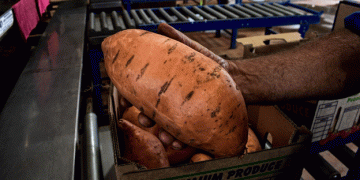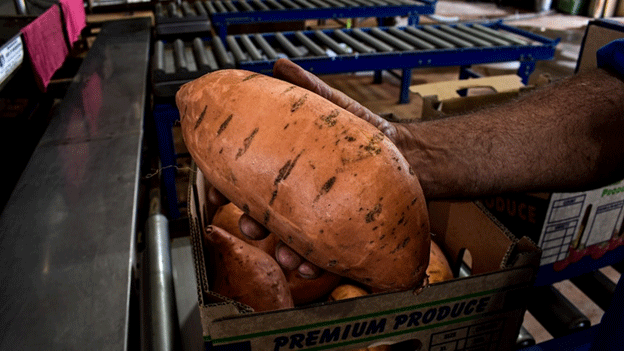Andrew and Nicola Forrest, the mining magnates behind Harvest Road, have set their sights on increasing sweet potato production in Western Australia. Their goal is to reduce the state’s heavy reliance on imports from the east coast, which currently supplies the majority of sweet potatoes to WA markets. Through innovative farming trials at Brickhouse Station in the Gascoyne region, 900 kilometers north of Perth, Harvest Road is working to scale up local production and provide a steady supply of this nutritious tuber year-round.
Since 2020, Harvest Road has been conducting horticultural trials to refine sweet potato cultivation in the region. In 2022, the trials culminated in a selection of three varieties: Bellevue, New Orleans (gold-skin varieties), and Murasaki (a red-skin, white-flesh variety). With harvest already underway at Brickhouse Station, the station expects to yield around 1,500 tonnes of sweet potatoes this season, which will be sold to major retailers such as HelloFresh, Coles, Woolworths, and Aldi. This will provide a significant boost to WA’s supply, which historically lags far behind the eastern states.
According to Hort Innovation, a grower-owned research and development group, the Bundaberg region of Queensland produced approximately 80,483 tonnes of sweet potatoes during the 2023 harvest, compared to just 915 tonnes in WA. Saxon Boston, the Farming Manager at Brickhouse Station, noted that 90% of the sweet potatoes consumed in WA are imported, typically transported from the eastern seaboard, a process that takes several days. This reliance on distant sources makes local production more essential, not only to reduce transport costs but also to improve freshness and sustainability.
This year, Harvest Road planted 30 hectares of sweet potatoes at Brickhouse Station, with plans to expand to 50 hectares, potentially producing up to 2,500 tonnes annually. The Gascoyne region is ideal for growing sweet potatoes due to its consistent sunlight, access to water, and favorable soil conditions, which allow for year-round production without seasonal limitations.
However, there are challenges to overcoming the entrenched dominance of the east coast in the sweet potato market. Joel Dinsdale, quality assurance coordinator at Vegetables WA, acknowledges the difficulty in achieving full local self-sufficiency. “It would be fantastic for our community if we could be completely self-sufficient,” Dinsdale said, though he pointed out that large-scale operations on the east coast have cornered the market. The significant production volumes in Queensland make it hard for WA producers to compete on a similar scale.
Growing sweet potatoes in WA also presents unique challenges. Paul Glavocich, a sweet potato grower in Wattleup, near Perth, highlighted the weather sensitivity of sweet potatoes. “Sweet potatoes don’t like frost, and they don’t do well in high heats like you see up north,” he explained. These growing conditions limit the potential for smaller producers to make a profit, with Glavocich noting that the costs associated with setting up the necessary infrastructure make it difficult for smaller-scale farmers to enter the market. Larger, well-backed businesses like Harvest Road, with significant financial resources, are better positioned to overcome these hurdles.
Despite these challenges, the Forrest family’s investment in sweet potato farming represents a promising development for WA’s agricultural future. By increasing local production, Harvest Road is not only working to reduce reliance on external sources but is also contributing to the sustainability of the state’s food system, reducing transportation emissions, and improving food security.
Andrew and Nicola Forrest’s Harvest Road initiative to grow sweet potatoes in Western Australia is a bold step towards self-sufficiency and sustainability. With plans to expand production and refine growing practices, the company is working to reshape WA’s agricultural landscape and reduce the state’s dependency on imported produce. While challenges remain, particularly in terms of scaling production and overcoming weather-related hurdles, the project offers a hopeful glimpse into a more resilient and sustainable food future for the region.
































